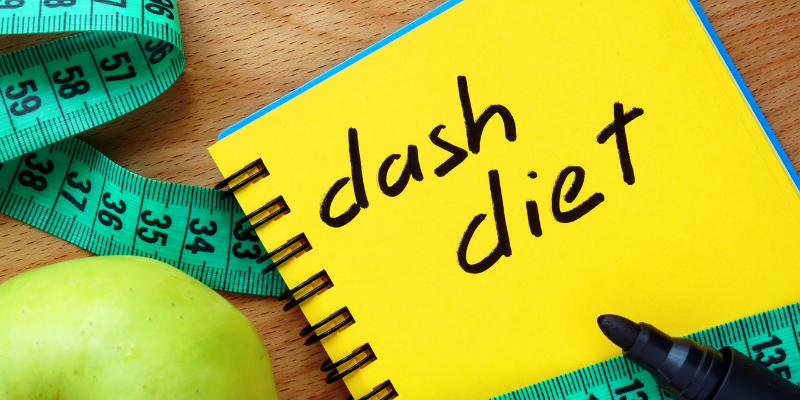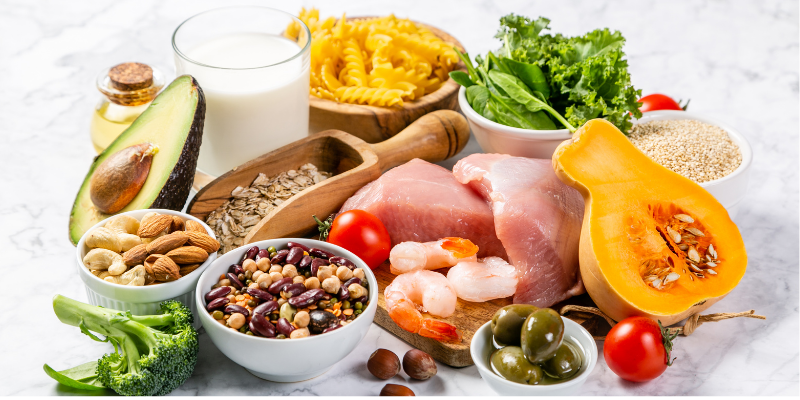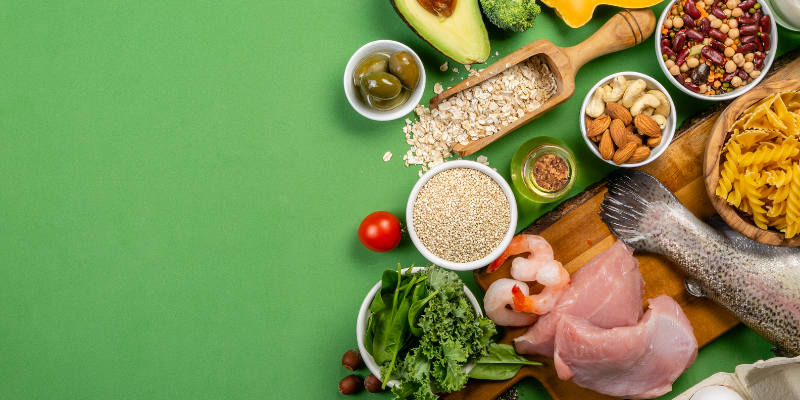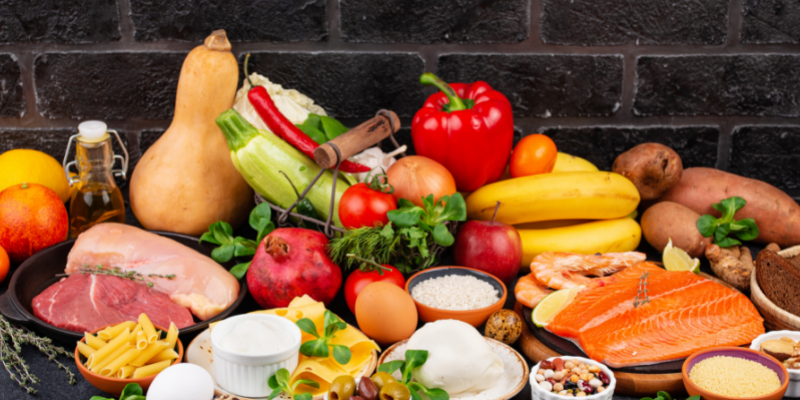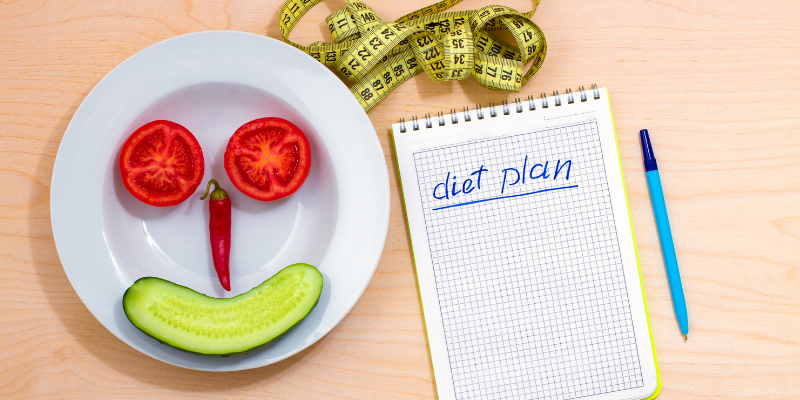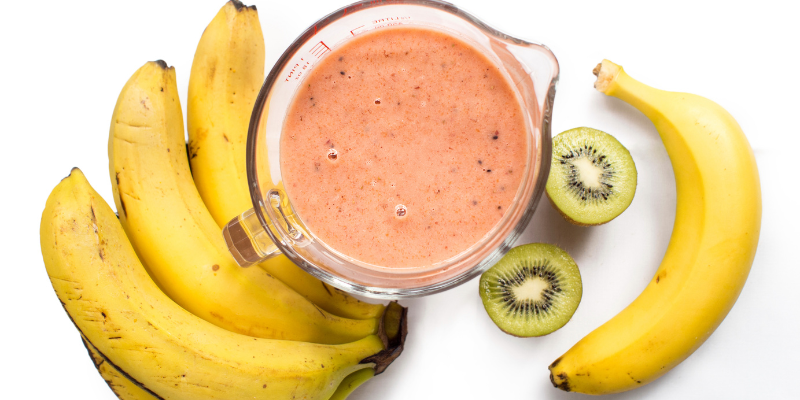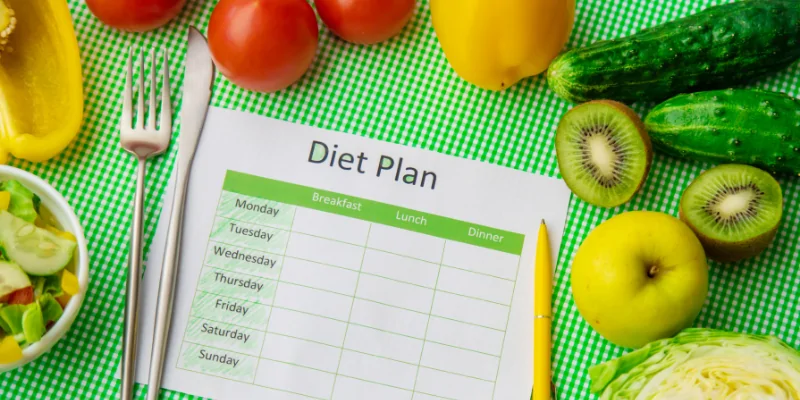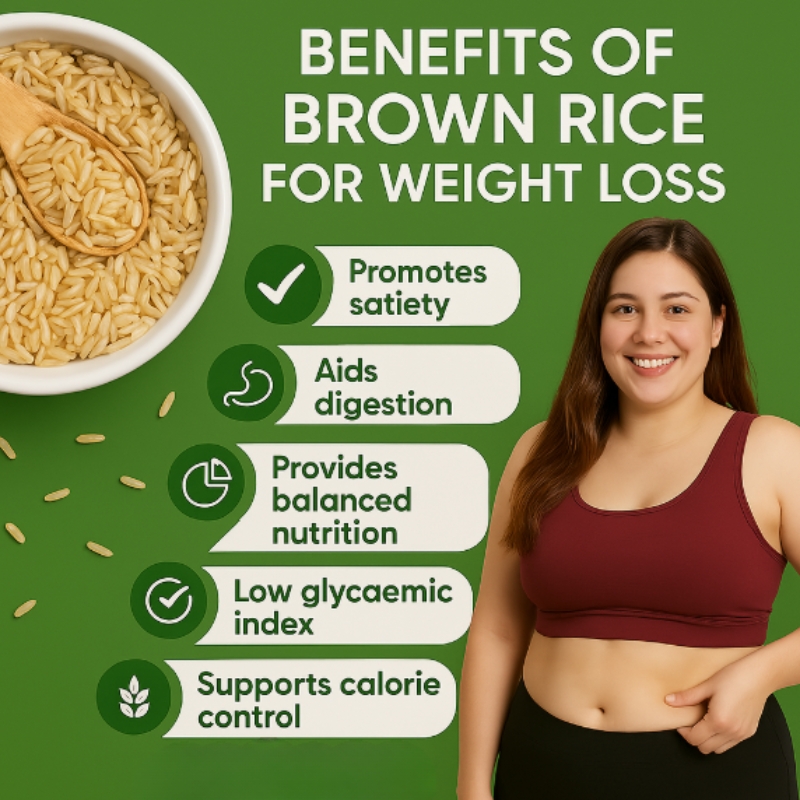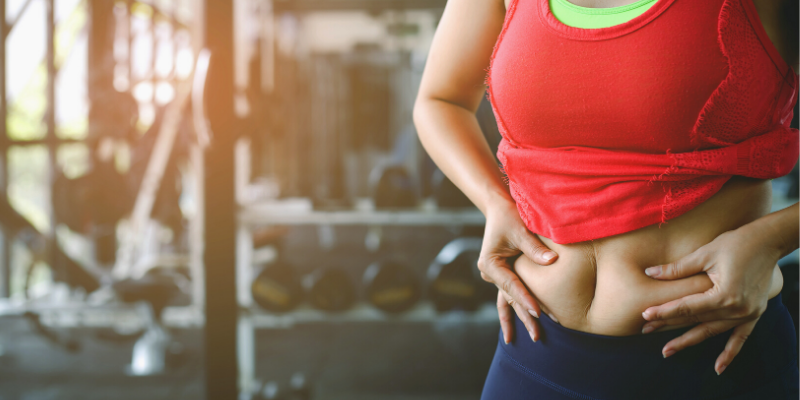DASH Diet Plan For Hypertension And Weight Loss
Hypertension and cardiovascular conditions are among the growing health concerns of millions in India and across the globe. One way to regulate high blood pressure levels and the risk of heart diseases is by making appropriate dietary changes.
DASH diet is one such diet plan that helps in preventing life-threatening cardiovascular diseases while maintaining good health.
Here is all that you need to know about the DASH diet.
What Is DASH Diet Plan?
DASH is an acronym for Dietary Approaches to Stop Hypertension. Researchers developed the DASH diet in the early 1990s as an extensive plan dedicated to lowering blood pressure among patients. It gained popularity and was among the ‘Best Overall Diet’ ranking list from 2007 to 2017.
The DASH diet plan also offers additional health benefits like weight loss while helping you maintain your optimal weight as it emphasises consuming plant-based foods while reducing your salt intake.
Health Benefits Of A DASH Diet
Here is a comprehensive list of health benefits that the DASH diet offers:
- Lowers Blood Pressure: As per a study, people suffering from hypertension derived impressive benefits from a low-salt DASH eating plan for high blood pressure and experienced significant changes. The standard DASH diet plan significantly reduced blood pressure without reducing salt intake, while the low-salt DASH diet further helped reduce systolic blood pressure by 12 mmHg and diastolic blood pressure by 5 mmHg on average.
- Reduces Cholesterol: DASH diet for hypertension greatly reduces abnormal cholesterol levels, especially LDL cholesterol, when followed consistently.
- Reduces The Risk Of Metabolic Syndrome: Research confirms that following a DASH eating plan reduces the risk of metabolic syndrome by about 81%.
- Helps Maintain Healthy Weight: By creating a calorie deficit without compromising the nutritional value, the DASH diet plan helps easy weight maintenance. By restricting unwanted calories, you will not put on additional weight and will be able to maintain your desired weight sustainably.
- Promotes Heart Health: By lowering the risks of high blood pressure and cholesterol, the DASH diet improves cardiovascular health and decreases heart diseases and stroke risk in both men and women.
- Aids In Weight Loss: The DASH diet meal plan for weight loss works great for people with normal blood pressure. By eliminating sugary, processed and high-fat foods, the DASH diet aids weight loss. When you are at your optimal weight, your blood pressure is stable (unless you have other health concerns).
- Lowers The Risk Of Diabetes: By limiting the intake of sugary foods and beverages, the DASH diet helps lowers the risk of diabetes and improves insulin resistance.
- Decreased Risk Of Certain Cancers: Research shows that the DASH diet helps prevent and reduce breast and colorectal cancers.
- Helps In Stress Management: By following a healthy DASH eating plan, you will provide your body with loads of nutrients and antioxidants through fruits and vegetables. This will help improve mindfulness, reduce stress and anxiety.
- Improves Sleep: The DASH diet plan improves the quality of your sleep when followed consistently. When your blood pressure is under control, it also helps people with sleep apnea.
- Sets A Healthy Eating Pattern: The DASH diet will help you develop a healthy eating pattern with improved satiety and decreased cravings. This, in turn, helps maintain weight and thus good health in the long run.
Must Read: Healthy Meal Plan For Weight Loss: Selection Tips
How DASH Diet Aids In Reducing Blood Pressure And Promotes Weight Loss?
The DASH diet plan reduces blood pressure in people suffering from hypertension while promoting weight loss. Researchers created this diet after they noticed that people who follow a vegetarian or vegan diet experience fewer instances of hypertension.
Therefore, eating plant-based foods form the foundation of this diet plan, along with consuming lean protein foods, which are naturally low in sodium, sugars and fat. The recommended sodium intake in the DASH diet chart is no more than 1 teaspoon or 2,300 mg, while the low-salt version of the DASH eating plan limits daily sodium intake to 3/4 teaspoon or 1,500 mg.
The reduced salt intake impacts blood pressure in people suffering from hypertension and helps reduce it when followed regularly. Additionally, eating nutrient-dense foods such as fresh fruits and vegetables helps improve the body’s electrolyte balance. The excess fluid that often contributes to high blood pressure gets eliminated naturally, thus relaxing the blood vessels and lowering blood pressure.
When you follow the DASH diet consistently, combined with required physical activity, you will notice a significant weight loss.
DASH Diet: Recommended Daily Calories And Nutrients
Here is a breakdown of the recommended nutrient content, while on a DASH diet, for your daily meal plan of 2000 calories:
- Fruits: 4-5 servings
- Vegetables: 4-5 servings
- Whole Grains: 6 -8 servings
- Nuts, Seeds, and Legumes: 1-2 servings
- Proteins: Upto 114 grams — lean meat, poultry, eggs, fish, low-fat cottage cheese, tofu, kidney beans etc.
- Low-fat Dairy: 2-3 servings
- Fats or Oils: 2-3 servings
- Sodium: 2300 mgs or less
- Sugar – 1 serving or less
Must Read: Fibers That Can Help You Lose Weight
What Foods Are Allowed In The DASH Diet Plan?
The DASH diet plan focusses on eating for different food groups with a few restrictions. The number of servings and the food portions for each food group will vary according to the daily calorie limit.
The following pointers explain what foods to consume and in what quantity.
- Vegetables: There is no restriction on the type of vegetables to consume while on a DASH diet. You can have four to five servings of different vegetables each day. For example, one serving includes around one cup of raw green leafy vegetables such as spinach or half a cup of cooked vegetables like broccoli.
- Fruits: There is no limit on fruits while on a DASH diet where you can include four to five servings of berries, pineapple, mango, pears, peaches, and more in your diet each day. For example, one serving includes around one medium apple (raw), half a cup of frozen peaches and 1/4 cup of dried fruits like apricots.
- Whole Grains: Whole grains are essential to provide the body with energy minus the unwanted calories. You can include whole-grain bread, whole-wheat flour, whole-grain cereals, brown rice, oatmeal, and quinoa in the DASH diet menu. The daily serving limit for whole grains is six to eight servings per day. A single serving could include one slice of bread, half a cup of cooked pasta and around 30 gms of whole-grain cereal (dry).
- Dairy Products: Choose low-fat dairy products where the ideal serving should be two to three servings in a day. For example, you can include one cup of skimmed milk, around 45 grams of low-fat cheese and one cup of low-fat yoghurt.
- Lean Proteins: The DASH diet focusses on including lean protein sources in your diet, such as lean cuts of meat, chicken, eggs, and fish. Choose no more than six or fewer servings in a day, once or twice a week. Meanwhile, vegetarians can opt for lentils, chickpeas, low-fat cottage cheese, tofu, edamame, kidney beans, etc. One serving means one egg and around 30 grams of cooked meat, fish, chicken or one cup of cooked lentils.
- Fats And Oils: Include no more than two to three servings of fats or oils in a day. Also, choose vegetable oils low in saturated fats to low-fat mayonnaise, low-fat salad dressings, sunflower, corn, or olive oil. A single serving could include one teaspoon of vegetable oil, one tablespoon of mayonnaise and two tablespoons of low-fat salad dressing.
- Nuts, Seeds And Legumes: You can include nuts, seeds and legumes no more than four to five servings in a week like sunflower seeds, kidney beans, flax seeds, almonds, peanuts and more in your DASH diet plan. One serving can include two tablespoons of almond or peanut butter, 1/3 cup of nuts and half a cup of cooked kidney beans.
- Added Sugars: The ideal servings of sugars should not be more than five servings per week. A single serving must constitute one tablespoon of sugar and one tablespoon of jam.
Foods You Must Avoid While On A DASH Diet Plan
- Processed and refined foods
- Simple carbohydrates and saturated fats
- Foods with high-sodium
- Full-fat dairy products
- Oils like coconut and palm oil
- Red meat and alcohol
- Frozen or packaged foods as they contain preservatives
Must Read: Is Intermittent Fasting Good For Weight Loss?
7-Day Sample DASH Diet Plan
Here is a 7-day DASH diet plan suitable for both vegetarians and non-vegetarians.
Note: This is only a sample diet plan. If you plan to start the DASH diet, consult a certified nutritionist to avoid any complications.
Day 1
- Breakfast: Two poached eggs (or) one cup of unprocessed oatmeal with one cup of low-fat skimmed milk and ½ a cup of chopped pineapple.
- Lunch: Chicken wrap made with boiled chicken (or) low-fat paneer wrapped in one multi-grain tortilla with two tablespoons of low-fat salad dressing and ½ a cup carrot and cucumber salad.
- Snack: One medium banana and one slice of multi-grain bread with one teaspoon of almond butter.
- Dinner: One cup of salmon (or) kidney beans cooked in one teaspoon of vegetable oil with one cup of brown rice and ½ a cup vegetable salad.
Day 2
- Breakfast: Egg (or) mashed potato toast cooked in one spoon of olive oil with one slice of toasted multi-grain bread with one cup of mixed fruit salad and ½ a cup cooked broccoli.
- Lunch: One serving of tossed vegetable (or) pan-roasted chicken breast with olive oil dressing and one cup of curd.
- Snack: One cup of sliced pear with cinnamon.
- Dinner: One cup of whole-wheat pasta cooked with finely chopped vegetables (or) boiled chicken in one tablespoon of olive oil with basil-pesto dressing. Add one cup of fruit of your choice.
Day 3
- Breakfast: Two boiled eggs (or) one cup baked beans with ½ a cup of cherry tomatoes, sliced bell peppers, one whole-wheat toasted bread, and one cup of pomegranate juice.
- Lunch: Spaghetti pasta with meatballs (or) vegetables like broccoli, carrots, and shallots cubes cooked in one tablespoon of olive oil, one cup of marinara sauce, and one mixed vegetable salad.
- Snack: One cup of low-fat yoghurt with mixed berries.
- Dinner: Vegetable and low-fat paneer kebabs (or) chicken kebabs cooked with one teaspoon of olive oil, served with one tablespoon of mint-coriander chutney. Add one cup of cucumber, cherry tomatoes, lettuce, and kale for a salad.
Day 4
- Breakfast: One cup of oatmeal with berries and bananas, three to four walnuts, and ½ a cup of fresh mixed fruit juice.
- Lunch: One serving of grilled chicken (or) grilled tofu in little oil or cooked along with roasted vegetables and one cup of couscous.
- Snack: One cup of low-fat rice pudding
- Dinner: One cup of quinoa with boiled chicken broth (or) assorted vegetables such as broccoli, carrots, bell peppers, salt and pepper, and one cup of sliced medium pear.
Day 5
- Breakfast: One cup of whole-wheat cereal with one cup of skimmed milk and one cup of mixed berries.
- Lunch: Chicken salad (or) paneer salad with lettuce, cucumber, cabbage, baby carrots, and spinach. One slice whole-wheat bread with one teaspoon peanut butter and ½ a of cup tomato juice.
- Snack: One banana with 3 to 4 almonds.
- Dinner: One small cup of tofu (or) 150 gm of fish, stir-fried with roasted vegetables and served with one cup of brown rice and one cup of pineapple slices.
Day 6
- Breakfast: Two slices of whole-wheat bread, toasted with little butter and one egg (or) ½ a cup of kidney beans, one cup of fresh orange juice and one medium apple.
- Lunch: One serving of lean chicken breast (or) low-fat paneer (grilled) with one cup of brown rice and one cup of toasted vegetable salad.
- Snack: One cup of low-fat yoghurt with kiwis, bananas and pineapple pieces.
- Dinner: Two whole-wheat rotis with one cup of lentils (without tadka) along with one cup of vegetables (or) chicken salad.
Day 7
- Breakfast: Boiled chicken with broccoli salad (or) one cup of unprocessed oats with berries and bananas along with three-four almonds and one medium apple.
- Lunch: One paneer or chicken wrap with hummus and mint chutney and ½ a cup of fresh orange juice.
- Snack: One cup of low-fat milk with sugarless whole-wheat or oats cookies.
- Dinner: One cup of tomato (or) some chicken in low-fat cheese gravy with two multigrain or bajra rotis and one cup of green salad.
Must Read: How Much Weight Can You Lose In A Month Under A Strict Diet?
Expert Tips To Follow While Following DASH Diet Plan
- Reduce sodium intake as much as you can. Use sodium-free spices and seasoning. Avoid adding salt while boiling pasta or cooking rice.
- Read food labels thoroughly for sodium and sugar content while buying groceries.
- Choose fresh fruits and vegetables instead of frozen or canned ones.
- Eat whole grains instead of refined grains to improve satiety.
- Choose fresh lean meat, poultry and fish instead of seasoned or cured meats.
- Avoid pickles, cured and smoked foods, full-fat cheese or salty ingredients.
Must Read: Healthy Eating Habits For Weight Loss!
Conclusion
The DASH diet plan helps to effectively eliminate sodium from your diet, which protects and restores heart health. Further, research shows that weight loss is an added benefit. If you want to reduce hypertension or adopt a healthy lifestyle, you can choose the DASH diet plan.
Our certified subject matter experts do extensive research and collate facts from reputed scientific journals and international studies to create informative and engaging articles related to all your dermatology concerns. They strive to help you decipher medical jargon, distinguish fact from fiction and overcome paranoia. Our qualified medical board or expert panel goes a step further to verify these facts based on their rich academic knowledge, vast clinical experience and critical industry insights to ensure you consume only medically accurate content that empowers you to make informed decisions about your hair and skin-care treatments and weight management. Check out our Editorial policy for further details
https://www.usnews.com/info/blogs/press-room/articles/2021-01-04/us-news-reveals-best-diet-rankings-for-2021https://www.ncbi.nlm.nih.gov/pubmed/10410299
https://www.nhlbi.nih.gov/health-topics/dash-eating-plan
https://www.ncbi.nlm.nih.gov/pubmed/24906470
https://www.ncbi.nlm.nih.gov/pubmed/24949037
https://www.ncbi.nlm.nih.gov/pubmed/26773016
https://www.ncbi.nlm.nih.gov/pubmed/21058045
https://www.ncbi.nlm.nih.gov/pubmed/26622263
https://www.ncbi.nlm.nih.gov/pubmed/10410299


